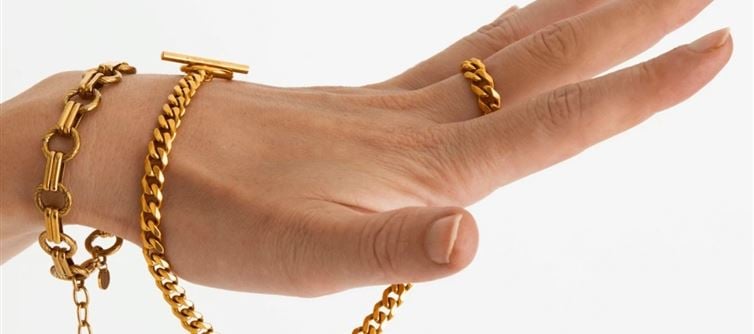
Unfortunately, there are plenty of dishonest goldsmiths and dealers who are constantly looking for ways to pass off lower-quality gold as higher-quality. Knowing how to be certain of the purity of the metal one is purchasing with their hard-earned money is crucial to ensuring that such nefarious schemes are defeated.
Proper BIS Hallmark
In 2000, the Center implemented the BIS hallmarking method for gold jewelry in an effort to bring some discipline to the unregulated gold industry. Gold jewelry hallmarking became required in 256 areas on june 23, 2021, and an additional 32 districts were added on april 4, 2022. Starting on september 8, 2023, the third phase got underway. A trustworthy certification for gold that informs the buyer that the metal satisfies the stated purity level is the BIS (Bureau of indian Standards) hallmark. Details such as the jeweler's identification and purity in karats are stated in the hallmark.
The HUID number
Importantly, each piece of hallmarked gold jewelry has a unique HUID number. The Hallmark Unique Identification (HUID) number is what HUID stands for. Anyone can use the BIS Care App to verify this number, which is meant to indicate legitimacy. It will draw attention to the jewelry's purity, registration, and hallmarking center information. Any smartphone's app store offers the BIS Care App for download. The buyer can check the quality of the gold they are about to purchase by entering their HUID into this app. Additionally, it will include information on the hallmarking center and jeweler.
Magnet Test
A magnet test, which involves touching a piece of gold jewelry with a magnet, is another option, according to gold retailers. A magnet won't be drawn to real gold. Additionally, the buyer should always request a bill from the vendor. It should include the jewelry's weight, gold carat, and hallmark certification. India often offers 22 carat, 18 carat, and 14 carat gold jewelry. Coins and bars are made from 24 carat pure gold. 24 carat gold cannot be used to make jewelry.




 click and follow Indiaherald WhatsApp channel
click and follow Indiaherald WhatsApp channel